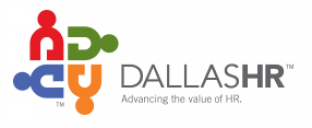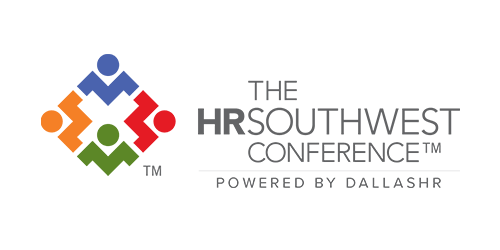
Employer Support for Employee Mental Health
It’s no secret: employees are stressed, and they have been for some time. The pandemic has only added to this, both professionally and personally. As a result, many workers are struggling with mental health challenges, and this stress can affect productivity, engagement, turnover, and the bottom line.
Employee mental health is a priority
A growing “always-on” workplace culture has only been amplified by the pandemic. Many of us now work where we live—or live where we work, depending on how you see it. As a result, it’s never been harder to disconnect from work. Learning how to best navigate the work world in a remote or hybrid setting these last two years has been hard, especially amid constant change. Stress, burnout, and other threats to employee mental health are pervasive.
A 2022 report from the American Psychological Association revealed levels of employee burnout have hit an all-time high. A staggering 79% of employees had experienced work-related stress in the month prior to their survey. Additionally, about three in five employees reported work-related stress is causing loss of motivation, decreased energy levels, and cognitive weariness. This is up almost 40% since 2019.
Stress, burnout, and poor mental health reportedly contribute to 550 million lost workdays per year and perhaps nearly as much as $190 billion in lost productivity. In a work environment as dynamic as today’s, managing mental health is imperative.
Managing employee stress during and after Covid-19
To be sure, the events of the past two years have increased the stress on employees, bringing employee mental health needs to the fore for companies of all sizes and in all industries. And employees need help as the pandemic continues to foster uncertainty. Before COVID-19, nearly six in 10 workers who struggle with mental health reported feeling their employers did not provide helpful or comprehensive mental health benefit options. Just half of the workers agreed they had the emotional support at work necessary to manage their workplace stress.
These survey and research findings indicate employers should address this emerging employee need to support better mental health in the workplace, now and in the months and years to come. Forward-thinking employers already are: An annual summary of 2021 health benefits conducted by the Kaiser Family Foundation found nearly 40% of employers expanded mental health benefits amid the pandemic.
Of course, sometimes on-demand resources and guidance are not enough. Employees are dealing with radically changed realities, new demands, isolation, and the crisis fatigue of COVID-19. Addressing employee needs with expanded benefits—and, specifically, support for mental health—has become essential.
What can employers do? Here are some steps many savvy employers are taking:
- Destigmatize and empathize. According to research from the American Heart Association, perhaps as many as two-thirds of workers struggling with their mental health don’t let their employer know. Yet treatment is highly effective, with over 80% of employees treated for mental health conditions reporting increased rates of engagement and positivity about their workplace. Employer empathy is real and powerful and can help employees feel comfortable expressing their needs.
- Establish a baseline. Understand what coverage is currently offered for mental health support and services under the primary plan as well as your Employer Assistance Program (EAP) if you have one in place. Be sure to understand what the limits to coverage are, including covered appointments, deductibles, and prescription co-pays.
- Examine support services. Often employees in need of help may not know where to begin. It is essential to understand what, if any, resources are in place to help employees navigate to the right kind of support.
- Understand what is available. There are many solutions on the market, and not all of them are created equal. There are services part of your primary care plan as well as digital therapy solutions, options under the EAP, and others.
Certainly, helping employees through this period is important. But so is taking a more proactive approach to employee mental health and well-being going forward. Happy, healthy employees are more productive, create a better customer experience, and are less likely to leave your company in search of new opportunities—so addressing their mental health needs ends up being a win-win.
DallasHR is the third largest SHRM affiliate chapter in the nation. With more than 2,000 engaged HR professionals, the Chapter has been Advancing the Value of HR since 1939 through innovative education, valuable networking events and providing opportunities to share best practices with others in the field of HR. The HRSouthwest Conference powered by DallasHR is the official Texas SHRM conference and one of the largest regional HR events in the U.S. Visit us Dallashr.org, hrsouthwest.com and follow us at #dallashr, #hrswc.
It is no secret: employees are stressed, and they have been for some time. This past year has been a challenging one for everyone, both professionally and personally. As a result, many workers are struggling with mental health challenges, and this stress can affect productivity, engagement, turnover and the bottom line.
Employee mental health is a priority
While the last year has brought its share of historic stress, threats to employee mental health were already building before the pandemic and economic crises unfolded. In late 2019 according to an annual MetLife survey, 73% of employers reported addressing employee stress was a major priority for 2020. Resulting from a growing “always-on” workplace culture and the mounting conflict between work and home, this stress had begun to affect not only leaders and managers but also line-level employees across industries.
In 2018, a Gallup poll found nearly two-thirds of employees had felt stress or burnout on the job. In 2019, in response to what it was seeing globally, the World Health Organization recognized “workplace burnout” as an occupational condition. Stress, burnout, and poor mental health reportedly contribute to 550 million lost workdays per year and perhaps nearly as much as $190 billion in lost productivity.
Managing employee stress during and after COVID-19
To be sure, the events of the last year have increased the stress on employees, bringing employee mental health needs to the fore for companies of all sizes and in all industries. And employees need help as the pandemic passes the one-year mark with “normalcy” not yet within reach. Before COVID-19, nearly six in 10 workers who struggle with mental health reported feeling their employers did not provide helpful or comprehensive mental health benefit options. Just half of workers agreed they had the emotional support at work necessary to manage their workplace stress.
These survey and research findings indicate employers should address this emerging employee need to support better mental health in the workplace, now and in the months and years to come. Forward-thinking employers already are: in summer 2020, a new survey found nearly 50% of employers were enhancing or expanding healthcare and wellness benefits for employees during this time:
- Nearly 80% had implemented or expanded access to virtual mental health services
- 60% launched or added easy virtual solutions, like virtual workout programs
- Half had promoted health nutrition and weight management resources for at-home employees
Of course, sometimes on-demand resources and guidance are not enough. Employees are dealing with radically changed realities, with new demands for remote schooling, constraints on childcare, isolation in remote work, and the crisis fatigue of COVID-19. In addition, there has been an unrelenting barrage of (largely negative) news available to us 24/7.
In this situation, addressing employee needs with expanded benefits—and, specifically, support for mental health—becomes essential. What can employers do? Here are some steps many savvy employers are taking during this time:
- Destigmatize and empathize. According to research from the American Heart Association, perhaps as many as two-thirds of workers struggling with their mental health don’t let their employer know. Yet treatment is highly effective, with over 80% of employees treated for mental health conditions reporting increased rates of engagement and positivity about their workplace. Employer empathy is real and powerful and can help employees feel comfortable expressing their needs.
- Establish a baseline. Understand what coverage is currently offered for mental health support and services under the primary plan as well as your Employer Assistance Program (EAP) if you have one in place. Be sure to understand what the limits to coverage are, including covered appointments, deductibles, and prescription co-pays.
- Examine support services. Often employees in need of help may not know where to begin. It is essential to understand what, if any, resources are in place to help employees navigate to the right kind of support.
- Understand what is available. There are many solutions on the market, and not all of them are created equal. There are services part of your primary care plan as well as digital therapy solutions, options under the EAP, and others.
Certainly, helping employees through this period is important. But so is taking a more proactive approach to employee mental health and well-being going forward. Happy, healthy employees are more productive, create better customer experience, and are less likely to leave your company in search of new opportunities—so addressing their mental health needs ends up being a win-win.
What have you done to boost employee mental health at your company?
DallasHR is one of the largest SHRM affiliate chapter in the nation. With more than 2,000 engaged HR professionals, the Chapter has been Advancing the Value of HR since 1939 through cutting-edge education, fun networking events and opportunities to share best practices with others in the field of HR. The Chapter powers The HRSouthwest Conference, one of the largest regional HR events in the U.S. hosting more than 2,400 attendees in Fort Worth annually. DallasHR events are held in both Dallas and Collin Counties. Visit us at dallashr.org to join or hrsouthwest.com to register and follow us at #DALLASHR, #HRSWC.





